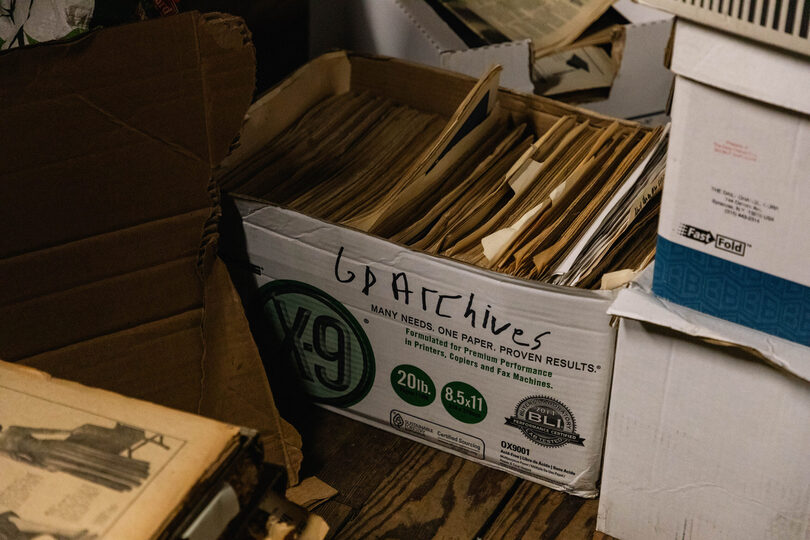Comprehensive archives can empower Syracuse’s minority communities

Joe Zhao | Assistant Photo Editor
I-81’s destruction offers Syracuse the opportunity to reshape history through archival practices that can help uplift BIPOC communities, our columnist writes.
Support The Daily Orange this holiday season! The money raised between now and the end of the year will go directly toward aiding our students. Donate today.
The Interstate 81 viaduct destroyed a community of Black, Jewish and immigrant families in the 15th ward in spite of homes and local businesses flourishing prior to the enactment of the Urban Renewal Project.
These instances of historic marginalization affect present day communities and upcoming projects. How we approach the 15th Ward’s past and address new policy proposals can help bring justice to those displaced by the highway in the 1960s.
Efforts to have the community interact with history, specifically that of the 15th Ward, have been occurring and open to the public. Syracuse’s archival spaces should represent groups who have been negatively affected by past policies, allowing for policy makers to implement societal solutions with the full scope of a community issue in mind.
Documents and history books can provide a form of justice to a minority group.
The city of Syracuse remains one of the most impoverished and segregated cities in the United States. Despite efforts to bolster economic prosperity, Syracuse continues to see a repeat of history: instead of creating positive change in the redevelopment of housing and transportation, which historically are seen through policies that continue to neglect marginalized communities. Understanding the root causes of existing disparities inform more effective and targeted policy interventions. Historical context that involves the community, especially those directly affected by historical injustices, in the policy-making process is crucial.
Where in Syracuse can these gaps then be filled so that full historical archives are accessible to the community?
Run the Redline was a community event encouraging locals to walk or run along what was once the 15th Ward and view images and documents provided by the Onondaga Historical Association (OHA) to learn about housing discrimination.
Syracuse University has also hosted events to educate students and allow community members to engage with Syracuse history on the 15th Ward. In 2009, images of the 15th Ward were displayed in the Shaffer Art Building. Now more than ever, it is important to keep these memories alive and to intentionally emphasize to suppressed families that they have a valuable story to be added into these archival spaces such as ones at institutions like the Special Collections Resource Center at SU.
The Family Pictures Syracuse project has kept all this in mind as they bring the community together to create open dialogues, share history and include their narratives in a public archive under the Turning the Lens Collective. The project’s description addresses historical gaps by “providing space for local residents — especially those most impacted by the city’s changes — to have a voice in how Syracuse can preserve a more inclusive history of our city.” The project is a collaboration with the larger Family Pictures Institute for Inclusive Storytelling, which hosted several events throughout the fall semester in preparation for the grand finale in October.
Continued community engagement, education and collaborative projects are essential to maintaining the momentum in addressing historical injustices and shaping a more just and inclusive future for Syracuse. These practices also attest to the complexities of how BIPOC life is lived, documented and remembered.
The concept of community access to historical archives is vital. While there are ways for locals to visit OHA’s archives or seek information online, there is a conversation that needs to be had about whether current spaces welcome community members to view these documents. Having well-rounded archives isn’t only about preserving history but also about empowering communities to engage with and contribute to their own narratives.
The 15th Ward was labeled as a “slum” and was set to be demolished under the Urban Renewal Project as a part of the “beautification” of Syracuse. These are histories to be learned from, but we must also consider how these communities flourished. Through archives, the positive parts of the 15th ward’s history can be celebrated, which both honors the community as a whole and challenges negative stereotypes that may contribute to its stigmatization in previous policy and media.
Refocusing Syracuse’s history starts with addressing past mistakes. That can only happen when the archival spaces within the city take proper consideration of the narratives missing within their historical archives and most importantly, are accessible to the community represented within that history.
Universities with historical archives or private archives can take note of new ways to approach archiving history such as Black Archival Practices to begin analyzing gaps and how they collect history.
“Black archives and archival practices demand more than a cursory glance at the materials in an archival repository to declare that there are no Black archival stories to be told,” wrote The Black Scholar Guest Editors Zakiya Collier and Tonia Sutherland.
With a more inclusive and community-driven approach to archiving history, Syracuse can work towards acknowledging past mistakes, fostering a more complete understanding of its history and laying the foundation for positive change through policies that are built from a full understanding of the community they’re affecting.
Sarhia Rahim is a junior Policy Studies Major. Her Column appears bi-weekly. She can be reached at slrahim@syr.edu.





